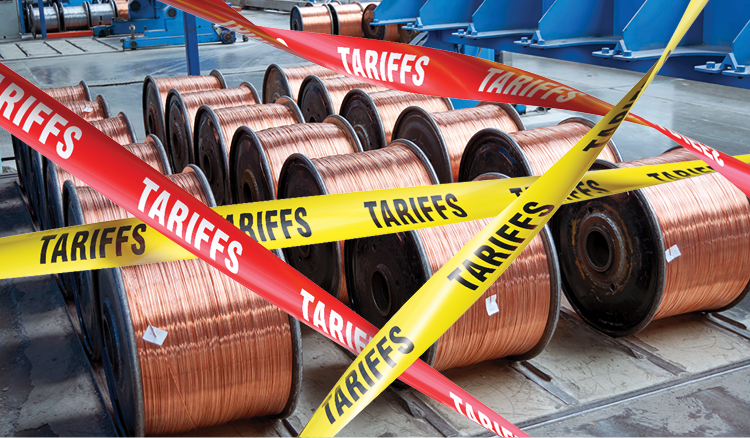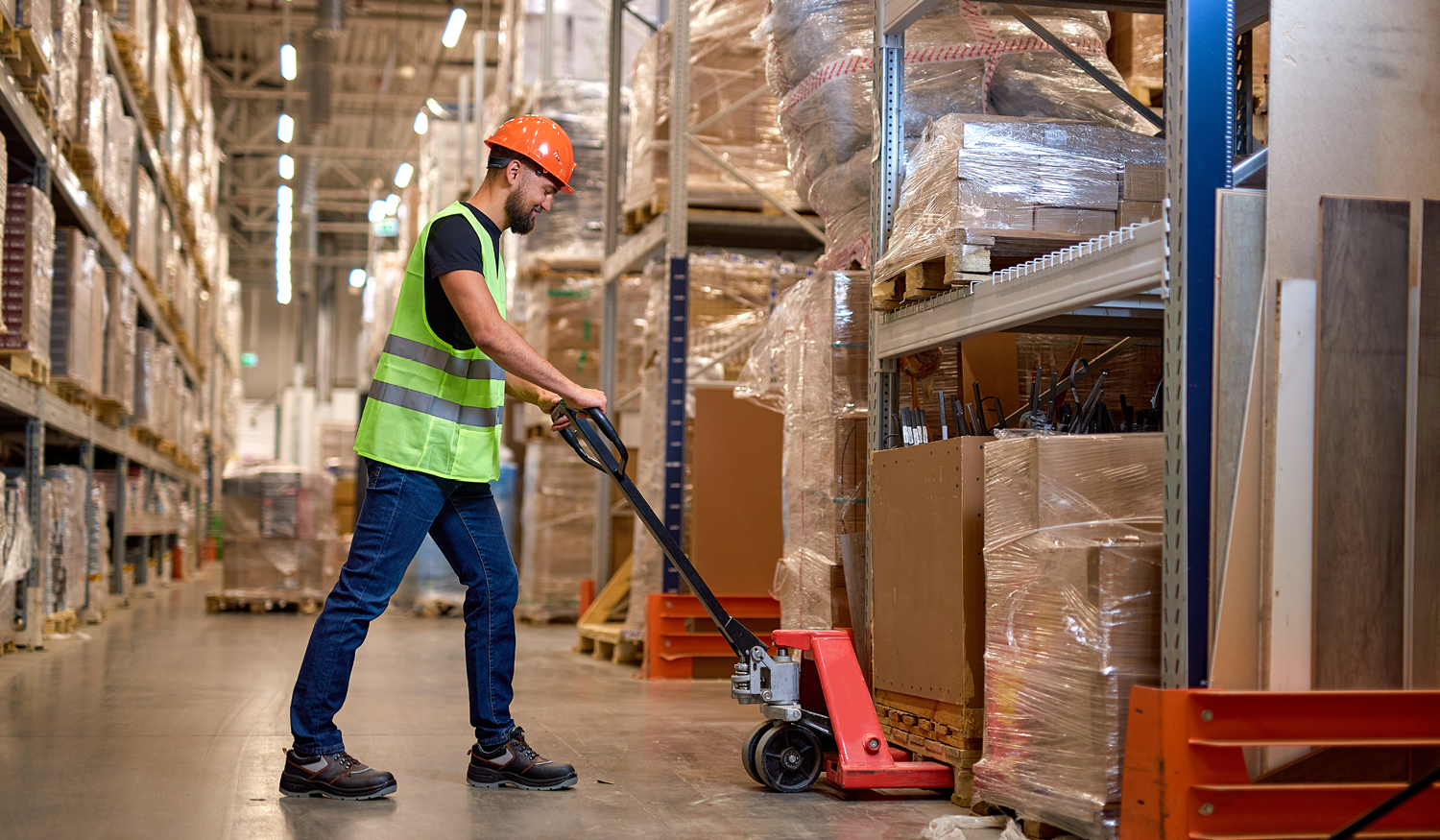Trump 2.0 Week 25 In Review: July Deadline Extended, 50% Copper Tariff Announced, and Higher Tariffs for Canada, Brazil, and BRICS
The White House delivered a decisive week of action, advancing its industrial policy agenda with aggressive new tariff threats and intensified pressure on key trading partners. With the July tariff deadline now extended to August, the U.S. is giving trading partners one last chance to negotiate—while simultaneously raising the pressure with new tariffs on copper, pharmaceuticals, and BRICS-aligned countries. At the same time, a wave of major new manufacturing investments suggests American industry is already adapting to the new trade reality.
Key Topics:
- July tariff deadline extended to August
- Major tariff hikes on Canada & Brazil
- 50% Copper tariff announced
- 200% Pharmaceutical tariffs threatened
- New tariff threats on BRICS-aligned countries
- Major new investments in U.S. manufacturing
If you’re looking for information on the recently passed ‘One Big Beautiful Bill’ and how it will impact your business, we recently published a separate article on this.
Tariff Deadline Pushed Back to August 1st
On Monday, President Trump officially extended the deadline for country-specific tariff hikes from July 9th to August 1st, providing a brief but critical window for nations to negotiate bilateral trade deals before the broader tariffs take effect. The extension applies to Trump’s reciprocal tariff framework, first unveiled in April, which targets countries running persistent trade surpluses with the U.S. The administration emphasized that the extension is procedural—not a sign of hesitation. “We’re giving them time to make a deal. That’s it,” Trump said during a cabinet briefing. Commerce Secretary Howard Lutnick also reaffirmed that “tariffs will activate on schedule,” warning that no country should bank on additional delays or carveouts.
Also on July 7th, the Commerce Department began sending formal tariff notices to over 100 nations. These letters outline customized tariff rates that will take effect August 1 unless revised through direct negotiations. While some countries are seeing reduced tariff rates under the revised policy, others are facing steeper penalties—Canada and Brazil being the most notable examples.
On Thursday, President Trump announced in a TruthSocial post—featuring a letter sent to Prime Minister Mark Carney—that the tariff on Canadian imports will rise from 25% to 35% starting in August, accusing Canada of retaliating “instead of working with” the U.S. to reach a deal. In response, Carney condemned the move as reckless, and signaled efforts to finalize a new trade agreement with the U.S. by July 21st.
In Brazil’s case, Trump increased their rate from 10% to 50%, citing Brazil’s prosecution of former President Jair Bolsonaro and alleged censorship of U.S. social media platforms, including Truth Social. Trump defended Bolsonaro as a “highly respected leader” and likened the trial to his own legal challenges. In response, Brazilian President Lula da Silva vowed to impose reciprocal tariffs, rejected any foreign interference, and disputed Trump’s claim of a U.S. trade deficit, citing a $7.4 billion surplus in 2024. Economists warned the move could severely disrupt key industries like energy, mining, aerospace, and agriculture, as the U.S. is Brazil’s second-largest trading partner.
For a full list of the new rates and how they compare to the original "liberation day" tariffs, check out our country-specific tariff guide.
So far, only three countries have successfully negotiated adjustments: the UK retained its 10% rate, Vietnam reduced its proposed rate from 46% to 20%, and China agreed to reduce its proposed tariff rate from 145% to 30% following direct negotiations which included commitments to expand U.S. agricultural imports and maintain open dialogue on critical technology trade practices.
While many trade negotiations still remain unresolved, the message to U.S. manufacturers is clear: a more level playing field is taking shape—setting the stage for renewed investment, expanded domestic production, and a more competitive future for American manufacturing.
50% Copper Tariff To Begin August 1st
Earlier this week in a White House cabinet meeting, President Trump announced a sweeping 50% tariff on all imported copper, set to take effect on August 1, 2025. He justified the move by citing findings from a national security review conducted under Section 232 of the Trade Expansion Act, which allows the president to restrict imports that threaten national security. According to Trump, the U.S. has become overly dependent on foreign copper, particularly from countries he claims are "not friendly" to American interests.
Trump also highlighted copper’s role in the production of semiconductors, electric vehicle batteries, power grids, and defense systems, arguing that secure and sufficient domestic supply was a matter of national urgency. He insisted that the tariff would serve as a wake-up call for the industry and drive new investment in U.S. copper mining and refining.
For context, about 45% of the refined copper consumer in the U.S. each year is imported. In 2024 for example, the U.S. imported $8.65B of refined copper, mainly from:
- Chile ($6.09B),
- Canada ($1.43B),
- Peru ($576M),
- Democratic Republic of the Congo ($309M),
- Mexico ($158M).
Overall, this move is poised to drive a powerful wave of reshoring, expand domestic manufacturing capacity, and generate countless well-paying jobs—solidifying America’s position as a secure and self-reliant industrial powerhouse.
Other New Tariff Threats
Trump Threatens Pharma Tariffs Again
Reaffirming his commitment to reshoring pharmaceutical production, President Trump announced this week that his administration will move forward with steep tariffs—potentially as high as 200%—on foreign-made drug imports. During a Cabinet meeting, he said companies will have 12 to 18 months to shift operations to the U.S. before facing penalties. The plan builds on previous comments made earlier this year and is part of a broader effort to counteract offshoring trends that have made the U.S. heavily reliant on pharmaceutical imports from Ireland, India, and China. Commerce Secretary Howard Lutnick confirmed that results from a Section 232 investigation into pharmaceutical supply chains will be released later this month, potentially laying the legal groundwork for formal action.
Though market reaction was muted, the long-term signal is clear: the U.S. is shifting toward greater pharmaceutical independence. Trump’s tariff strategy aims to force a realignment of global drug production, with the goal of reshoring critical manufacturing capabilities that have been offshored for decades. For American manufacturing, this represents a generational opportunity to rebuild capacity in one of the world’s most advanced and high-value sectors. With support from regulatory reforms and potential tariff walls, the U.S. pharmaceutical base is positioned for renewed investment, innovation, and job creation.
Trump Threatens Extra 10% Tariff on Countries Aligning With BRICS
On Sunday, President Donald Trump escalated tensions with the BRICS bloc by declaring that the U.S. would “pretty soon” impose a 10% tariff on imports from all BRICS countries. Speaking at a cabinet meeting, Trump said the tariff would apply to any nation in the group, warning that “they won’t be a member for long.” This came after a BRICS summit in Rio de Janeiro, where member nations—including new entrants like Iran and Indonesia—voiced indirect criticism of U.S. trade and military policies. Trump, who initially raised the tariff threat on Sunday via Truth Social, claimed the bloc was designed to “degenerate our dollar” and weaken the U.S.'s position as the world’s reserve currency, equating such a loss to “losing a major world war.”
The threat drew swift backlash from Brazilian President Lula da Silva, who rejected Trump's rhetoric, stating the world “does not want an emperor” and insisting BRICS would not bow to U.S. pressure. While Trump gave no official date for implementing the tariff, sources indicated it might only apply to nations pursuing overtly anti-American policies. Nonetheless, the rhetoric signals potential trade disruptions for U.S. companies operating in or sourcing from BRICS-aligned markets.
New Investments In U.S. Manufacturing
Hikma Pharmaceuticals Announces $1B Investment To Expand Domestic Production Capabilities
Hikma Pharmaceuticals USA recently announced a $1 billion investment to expand its U.S. manufacturing and R&D capabilities by 2030, strengthening its role as a key domestic supplier of essential generic medicines. The initiative—America Leans on Hikma—builds on over $4 billion in previous U.S. investments and will add capacity across facilities in Ohio and New Jersey. With more than 12 billion doses produced annually and a portfolio of 800+ generic medicines, Hikma is already one of the top three suppliers of sterile injectables in the U.S. This expansion is expected to create over 300 new high-skilled jobs and support efforts to alleviate critical drug shortages.
The announcement received strong bipartisan support at a groundbreaking event in Columbus, Ohio. Company leaders and elected officials emphasized the importance of strengthening domestic pharmaceutical production. For U.S. manufacturing, this move underscores a broader shift toward rebuilding industrial capacity, boosting self-reliance, and securing the medical supply chain for the long term.
Anduril Gets $310 Million State Grant for Defense Manufacturing Hub
Anduril Industries is set to receive a record-breaking $310 million grant from JobsOhio to build a major defense manufacturing facility in Pickaway County. The project will create 4,008 new jobs, generate over $530 million in payroll, and drive at least $910.5 million in investment over the next decade. This is the largest incentive package in JobsOhio history, surpassing the one offered to Intel. The grant will be paid out over 10 years, with commitments maintained for the full 30-year agreement. By 2035, the plant is expected to employ workers earning an average salary of over $132,000, delivering long-term economic gains for the state.
The facility will anchor Anduril’s role in the U.S. Air Force’s Collaborative Combat Aircraft (CCA) program, developing and testing autonomous aircraft systems. It strengthens Ohio’s status as a hub for aerospace and defense innovation, fueled by its proximity to Wright-Patterson Air Force Base. JobsOhio leaders say the investment underscores the state’s appeal to high-tech firms seeking scalable growth. More broadly, it signals a major win for U.S. manufacturing, keeping advanced defense production close to home and reinforcing American industrial strength.
Adapting with Agility: How Veryable Turns Uncertainty into Opportunity
With tariffs rising on copper, pharmaceuticals, and imports from key trade partners, manufacturers and distributors are under mounting pressure to adapt quickly. Uncertainty around supply chains and shifting policy timelines has become the norm—and fixed cost exposure only makes it harder to stay quickly pivot. That’s why thousands of businesses are turning to Veryable. Our on-demand labor model gives you the flexibility to scale in real-time, respond immediately to demand surges or sudden slowdown, absorb trade shocks, and move faster than the competition. In today's volatile trade environment, agility isn’t just "nice to have" —it’s essential. With Veryable, you can embed that agility into your operations and turn your labor strategy into a competitive edge.
Ready To Get Started?
Talk to an Expert Create Your Free Business Profile
Additional Resources
U.S. Manufacturing Today Podcast
Stay ahead of the curve with the U.S. Manufacturing Today Podcast, Hosted by Matt Horine, our Head of Reindustrialization. Each episode features in-depth conversations with industry experts and business leaders, exploring the latest trends, policy shifts, and challenges shaping American manufacturing and distribution.
In this week’s episode, Matt breaks down the most recent trade policy moves under Trump 2.0 and what they mean for manufacturers navigating an increasingly volatile landscape.
Listen now on our website or wherever you get your podcasts—Spotify, Apple, YouTube, and PocketCasts.
Navigating Trump 2.0
For additional insights into what’s changing under Trump 2.0, visit our “Navigating Trump 2.0” page. There you'll find comprehensive information on recent and potential future changes, along with more articles like this one.
Veryable Vendor Network
The Veryable Vendor Network (VVN) is an ecosystem of manufacturing, warehousing, and logistics companies that utilize Veryable to deliver quality products and world-class service to their customers regardless of demand. If you’re looking for new domestic suppliers, submit a form and our team will be in contact shortly after.
Previous Posts
Old Roles, New Realities - Who Owns Agility?
The Future of Manufacturing and Logistics
Create a free business profile today to explore our platform.






